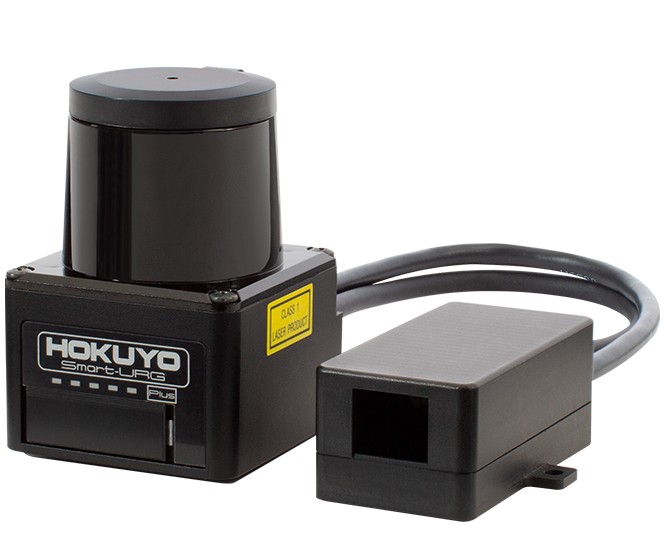The reliance on 2D LiDAR sensors is quickly increasing as it’s helping global industries to adopt autonomous capabilities. This has increased the demand for sensors, pushing the LiDAR market to reach USD 3.7 billion by 2029 at a CAGR of 18.2%.
Witnessing the rise in demand, most sensor manufacturers are focusing on scaling production. Only a few are truly innovating new functionalities that make using LiDARs easier. Hokuyo stands among those few, offering all-new Power over Ethernet (PoE) integration in its LiDAR sensors. The aim is to streamline the connectivity issues industries face.
Let’s explore how this single-cable connectivity enhances LiDAR sensor functionalities and brings operational efficiency.
How Single-Cable (PoE) Integration Simplifies 2D LiDAR Sensor Use
Most industries want automation in their workplaces to streamline processes, and to support this novel approach, Hokuyo has engineered PoE-equipped LiDAR sensors. These bring efficiency in warehouses, manufacturing plants, automotive, and interactive media workspaces as they rely on a single cable.
No Multiple Cable Mismanagement
Traditional 2D LiDAR sensors often require two separate cables, one for power and another for data, which complicates installation. Industries mostly mount the sensors on walls, ceilings, robots, or other machinery, where multiple cables can limit the flexibility and increase the chances of miswiring or physical wear. Plus, they add to the complexity when the sensor needs to be mounted on small robots, where a web of wires pre-exists.
PoE-equipped LiDAR sensors effectively tackle these situations, as both power and data can run through a single Ethernet cable. Therefore, the sensors' layout remains cleaner, and maintenance requirements are reduced.
Better Power Management
PoE allows you to centralize the control of power distribution. Especially in large indoor operations, centralization can greatly benefit, as multiple LiDAR sensors can be deployed across different zones.
Without the need for local power adapters or extra wiring, workplaces can standardize the power management from a single point of control. This further simplifies the integration of LiDAR sensors with existing network infrastructure, making remote monitoring and diagnostics more efficient.
Plus, in mobile applications, such as those mounted on AMRs or AGVs, the PoE can reduce onboard power complexity. Its standard power input allows engineers to better manage energy loads across all critical components, including other sensors, LiDAR, navigation systems, and communication modules.
Improves Safety
LiDAR sensors are commonly used to create virtual safety zones around people, pallets, shelves, or machinery. These zones rely on continuous, uninterrupted sensor data to detect motion, unauthorized entry, or object intrusion.
By using PoE, the risk of connection loss or accidental unplugging can be significantly reduced. A single cable means fewer potential points of failure, which means more reliable monitoring.
Adds Flexibility to AMRs and AGVs
Autonomous mobile robots and guided vehicles have strict design constraints. Every new cable increases the space consumption, adds weight, complicates maintenance, and even the central power load unit needs to be designed accordingly.
However, when a 2D LiDAR sensor becomes standard for these applications, it can help change the design for better performance. Also, the relocation or upgradation of sensors becomes easier, based on plug-and-play functionality.
Key Benefits of Power over Ethernet Equipped LiDAR Sensors
There are multiple benefits of 2D LiDAR with PoE for both the integrators and the end consumers.
Time and Cost-Effective
The sensor manufacturer and the users can experience significant time and cost reduction when choosing PoE integration. With only one cable required for both power and data delivery, there’s no need to design the sensors around dual wiring pathways.
The need for external power adapters is also eliminated. All of this reduces Bill of Material (BOM) costs for manufacturers, simplifies getting certifications, and shortens product development cycles.
For end users, the benefits start at deployment. A single cable means faster installation, especially in hard-to-reach areas like ceilings, corners, AMRs, or AGVs. The cost-effectiveness is achieved because it’s a single cable. Therefore, when the cable gets damaged, the consumer needs to buy a single unit.
Reliable Performance

Hokuyo’s UST-10LXB-H02 2D LiDAR sensor is a great example, which comes with PoE connectivity. It’s compact, and despite a single cable, it provides accurate detection. It delivers high-resolution data with 0.125° angular resolution and a fast 25ms scan speed for accurate detection in real-time.
Data Analytics
When LiDAR sensors are powered via PoE, they can both receive and send high-volume scan data through a single Ethernet cable. This two-way data flow allows smart building systems to collect real-time spatial insights, such as occupancy patterns, motion detection, and object presence near pallets or equipment. Once ingested into data analytics platforms directly, this information helps optimize workflows.
What to Look for in a Single-Cable LiDAR Sensor?
There are a few key factors to consider before you choose a single cable LiDAR, such as:
- PoE compliance of the sensor.
- PoE power supply range.
- If it has a quick scan rate.
- It should have a precise angular resolution for accurate detection
- There should be no compromise in terms of scanning range, build quality, and accuracy.
- The scan angle should be wide, like Hokuyo UST-10LXB-H02 with a 270° FOV
Choose a PoE 2D LiDAR that has all these key essential functionalities, and if you face any issues, get in touch with us.
At Hokuyo, we are engineering unique and advanced LiDAR sensor solutions for all kinds of industries. Our aim is to support industrial automation with accurate, fast, safe, and cost-effective sensor technology.

 Factory Automation
Factory Automation Logistics Automation
Logistics Automation Process Automation
Process Automation Crane Collision Avoidance
Crane Collision Avoidance LiDAR/Obstacle Detection
LiDAR/Obstacle Detection Safety Laser Scanners
Safety Laser Scanners Optical Data Transmission
Optical Data Transmission Hot Metal Detectors
Hot Metal Detectors Laser Distance Sensor
Laser Distance Sensor Blog
Blog Whitepapers
Whitepapers Case Studies
Case Studies Infographics
Infographics